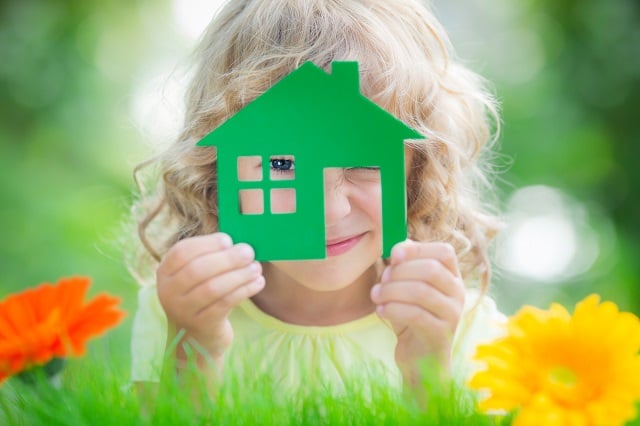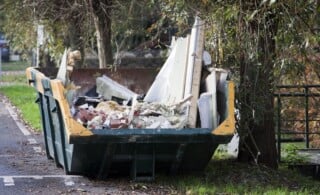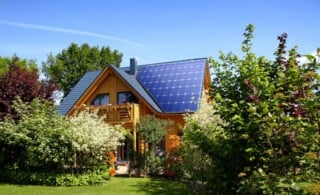Environmental conservation is an important issue in today’s world, and there are lots of ways to help in your own backyard. Now more than ever, it is vital to preserve our planet and its natural resources, like water, soil, plants and wildlife. Everyone can help out by recycling, using less water, and making the community more eco-friendly. Many of these activities can be fun, too!
What Is Conservation?
Conservation means using Earth’s natural resources in a way that is not wasteful and making sure that human beings can get what they need without destroying the habitats of plants and animals. One example of conservation is using renewable resources that cannot be used up, like wind and solar power, instead of non-renewable resources like oil or coal. Another good example of conservation is managing resources responsibly, like re-planting trees that have been cut down or recycling plastic to reduce waste and the size of landfills. The conservationist movement in the United States began at the turn of the century through the efforts of people like John Muir and President Theodore Roosevelt, and it has been growing ever since.
Why Conserve?
Conservation is not just important for humans, too. Damage to the environment can affect our ability to have clean water and plentiful food, clean air to breathe, and fuel for heat and transportation. If these resources go away, many communities will suffer. Humans are part of an ecosystem; every plant and animal on Earth affects the lives of others. If one part of the ecosystem is disrupted, the effects go up and down the food chain. For example, if a toxic chemical in the water supply kills the bees in an area, those bees cannot pollinate the plants growing there, which means less food for the animals and people who eat those crops. Maintaining a wide variety of plants and animals is called biodiversity.
- Why Care About Biodiversity?
- How to Conserve Biodiversity
- Conservation and Biodiversity Checklist
- Why Are Habitats Important?
Soil Conservation
One of Earth’s most important resources is soil. Healthy soil helps plants grow, prevents flooding, and provides a habitat for insects, worms, and rodents. The process of soil loss in an area is called erosion. Erosion can be caused by rain and flooding, wind, and human activity. It is important for farmers and gardeners to choose plants with roots that help hold soil together and be careful not to over-plow or to wash away too much soil with water. Certain plants can also help ensure that the soil is filled with healthy nutrients, so plants can thrive there in the future.
- What Is Soil Conservation?
- Prevent Soil Erosion on Your Property: A Homeowner’s Guide to Erosion Control
- Origins of Soil Conservation
Learn About Watersheds
A watershed is an area of land where all of the water from streams, rivers, and rain flows into one large water source. Usually, that water source is a large river, lake, or ocean. Watersheds are very big areas that are interconnected; if something pollutes the water in any part of the watershed, it will eventually affect the major water source that the smaller sources feed into. For example, the watershed of the Chesapeake Bay in Virginia extends into five different states, all the way to New York. Keeping the watershed safe is important to prevent disastrous flooding and droughts as well.
Water Conservation
Water is one of the most important resources on the planet and one of the primary necessities to sustain life on Earth. While it may seem like Earth is constantly getting new water from rain and snow, this is actually the same water that is constantly being reused as part of the water cycle. Water on the ground evaporates into clouds, which then precipitate water to the ground. It is possible for the world to run out of drinkable water, so it is important for everyone to use less water at home and try not to waste it. Thankfully, there are lots of easy ways to cut down on your water use.
- Water Conservation in Landscaping
- 25 Ways to Save Water at Home and in the Backyard
- Conserving Water Around the House (video)
- 100+ Ways to Conserve Water
Go the extra mile. Install a sink and shower head that save water without losing water pressure.
Wildlife Conservation
Natural resources are not limited to water, soil, and plant life. Animals are just as much of a natural resource, and many are in danger of going extinct. There are lots of organizations that can help you get involved with protecting wildlife. Many species are endangered because of destructive human activity that threatens their habitat and way of life. You can give back by making your community more wildlife-friendly. Even something as simple as keeping the family cats indoors can help save birds and rodents!
- Why Save Endangered Species?
- Creating Bird-Friendly Communities
- Wildlife Conservation
- Keeping Cats Indoors
What Can You Do?
There are lots of ways everyone can contribute to saving the environment. If you are interested in making a career of conservation or update your home to save water and other resources. There are steps, big and small, that families can take to save resources indoors and maintain a healthy ecosystem outside. Conservation can be as easy as turning off the lights!
- Hire a local energy auditor to find energy waste in your home and how you can save it.
- Find a plumber to repair leaky toilets, faucets or pipes.
- Xeriscape your lawn instead of maintaining thirsty grasses.
More Resources
- Environmental Careers
- How Kids Can Help Threatened Species
- Home Energy Conservation for Kids
- Backyard Composting (PDF)
- Planting Trees
- Rainwater Harvesting (PDF)
- Creating Bee-Friendly Lawns and Gardens
- Energy-Saving Interactive Activity
- Build a Worm Farm in Your Backyard
- Backyard Conservation Ideas (PDF)

 Eco-Friendly Ways to Dispose of Home Renovation Debris
Eco-Friendly Ways to Dispose of Home Renovation Debris  Dining Room Sets
Dining Room Sets  Sustainable Home Improvements that Help Save the Planet
Sustainable Home Improvements that Help Save the Planet  Green Building Glossary
Green Building Glossary  Green Kitchens
Green Kitchens 

Are You Familiar With This Topic? Share Your Experience.